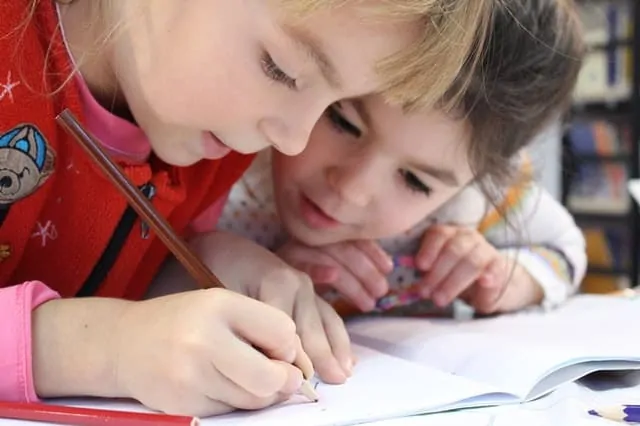
As we’re all adjusting to this temporary new way of living, working, and staying at home, and as many parents now find themselves in a homeschooling situation, discovering things to teach and fun ways to teach them can certainly be challenging. Your pediatric dentist in Long Island wants to help by giving you a few ideas about how you can bring the dental office into your home and teach your child about the importance of dental health.
A crafty, yet super-effective and fun way to show children how to floss is by using giant Legos, a little bit of Play-Doh, and a string of yarn. Stuff the spaces in between your Lego pegs with Play-Doh and use the yarn to floss it away. Not only can this help your kids learn how to floss, but you can also teach them about how food gets stuck between teeth, just like the Play-Doh on the Lego, and why it’s important to get rid of it.
All you’ll need for this activity is an empty egg carton (styrofoam is best), small pieces of different colored paper, and an old or spare toothbrush. Turn the carton upside down and use the protrusions as “teeth.” Place a few pieces of colored paper on the surfaces and explain that these are bacteria or food particles that got left behind. Have your little one practice gently brushing the paper pieces off without damaging the carton. This can help develop a gentle and effective brushing technique.
In this experiment, you’ll be looking at the effects different drinks have on teeth. It’s simple but takes some patience (it’s an overnight lesson). Take three hard-boiled eggs and one raw egg. Soak the boiled eggs — one in a dark soda, one in coffee, and one in tea — and put the raw egg in a glass of vinegar. Let them sit. The next day, remove each egg from its solution and notice what happens to the shells. The hard-boiled eggshells should be discolored, showing how some drinks can darken teeth. The shell from the egg in the vinegar should be gone, demonstrating how acid can damage tooth enamel.
One thing your pediatric dentist in Long Island tries to do consistently is to educate children on the dangers of sugar. This experiment can help. Take two plastic cups, put two teaspoons of yeast (acting as “plaque”), and one cup of warm water in both, then add one tablespoon of sugar to only one cup. Stir with two different spoons and watch what happens. You’ll see the “plaque” grow in the cup with the sugar. Explain that sugar can make plaque grow and that too much sugar in our mouths means even more plaque and an increased risk of cavities.
Currently, the American Dental Association (ADA) has recommended we postpone any routine dental care for three weeks. So even though your dental appointments are temporarily on hold, your pediatric dentist in Long Island wants all of our patients and their parents to know just how important it is to take care of our teeth during this time — and how learning about it can be fun. We can’t wait to see you soon!